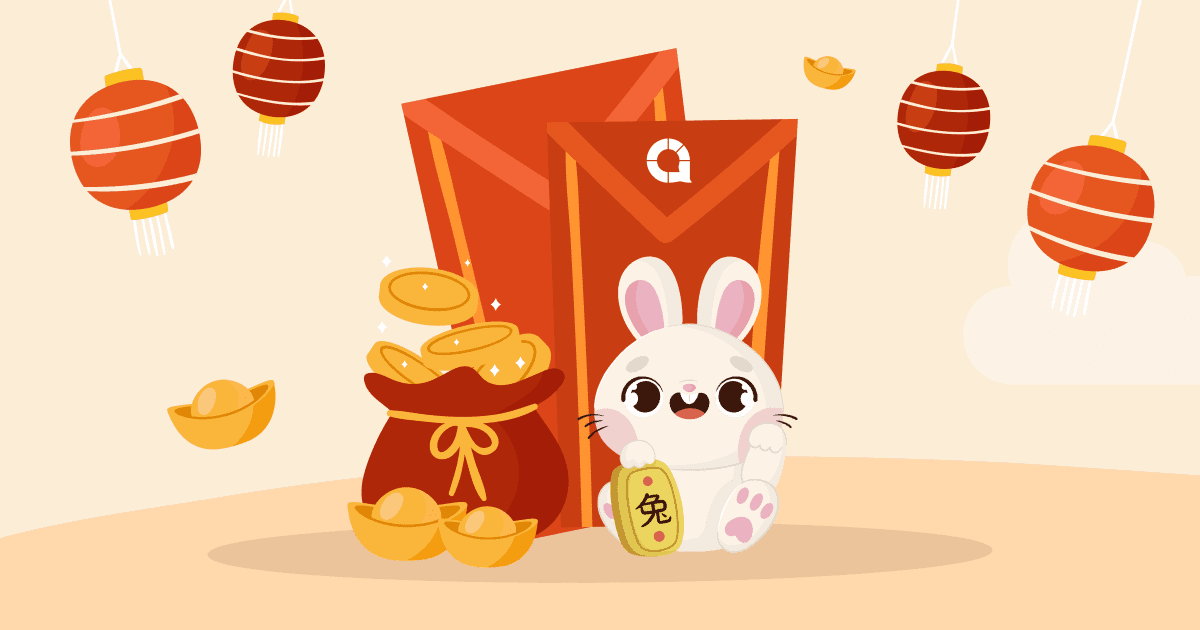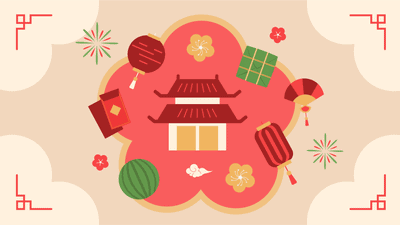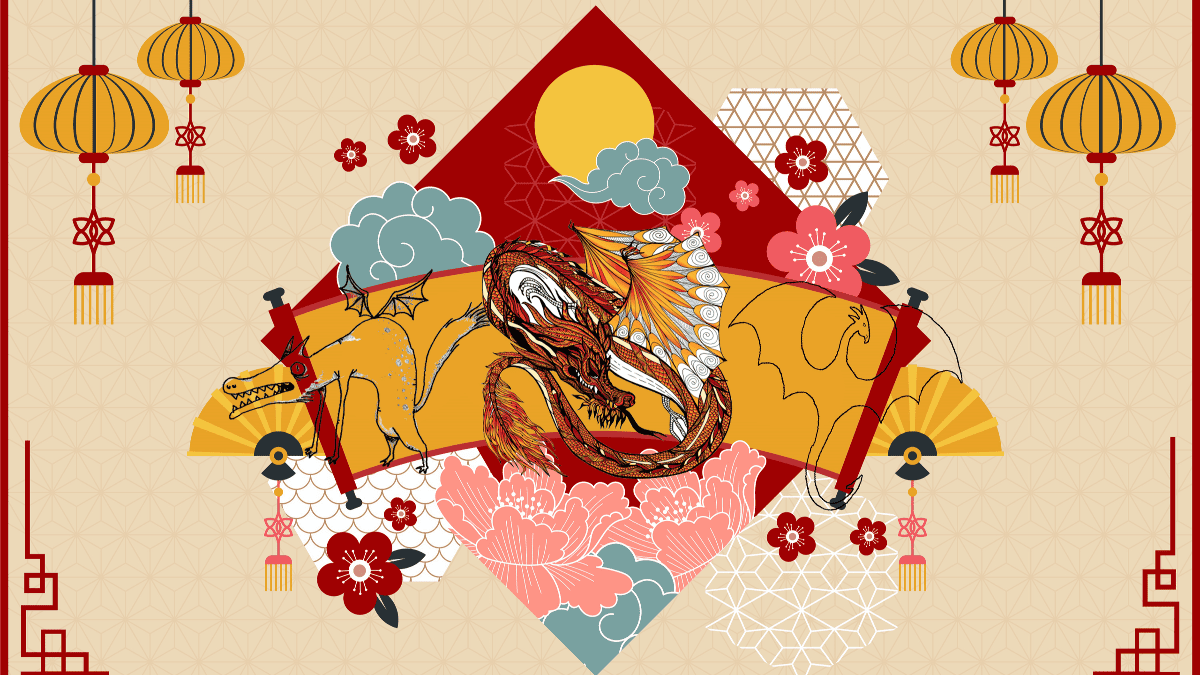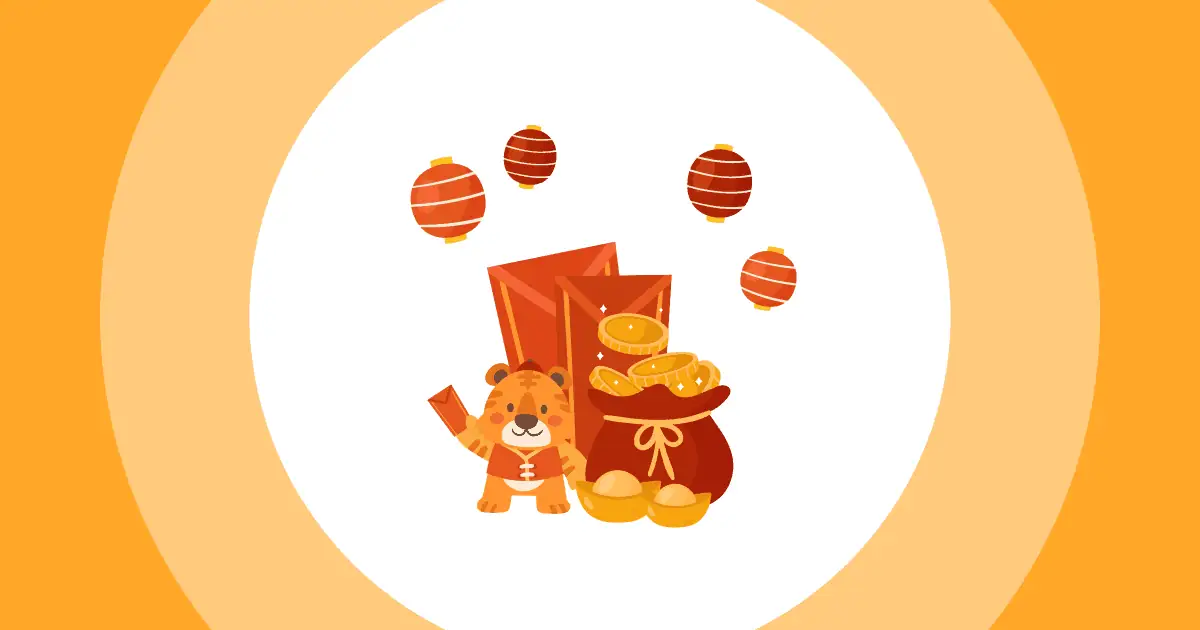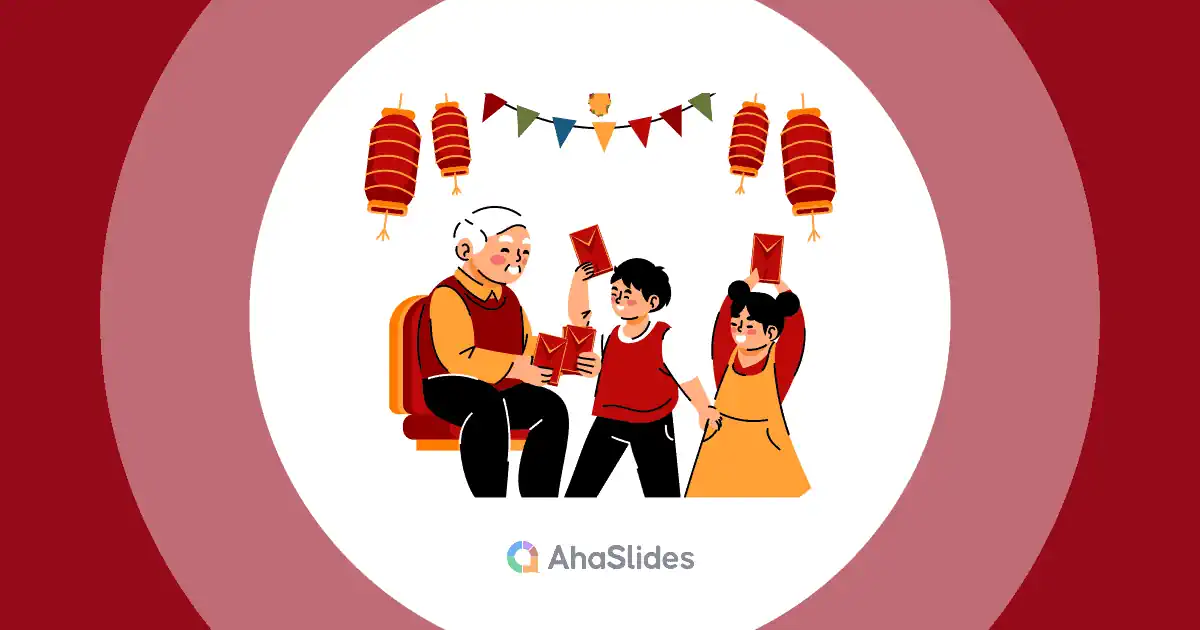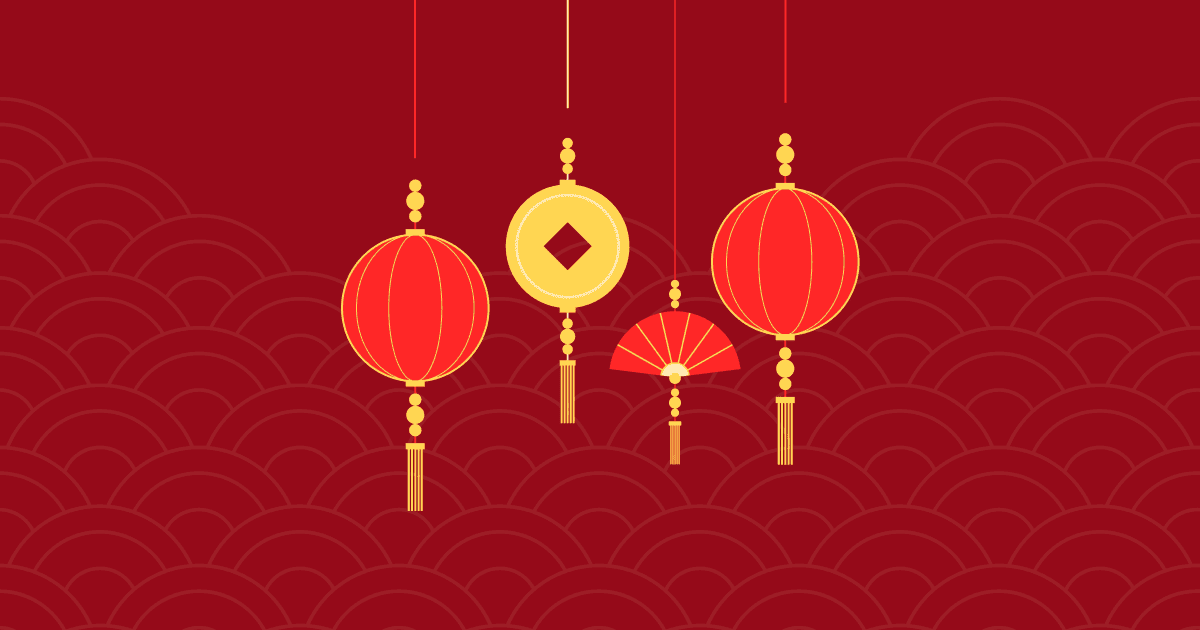2024年の旧正月が近づいてきました! 旧正月と中国の旧正月 春節は、月の周期に基づいた旧暦での新年の始まりを意味する広義の用語ですが、旧正月は、中国本土と台湾のお祝いに関連した文化的伝統を指します。 。
二つの用語は同じ意味で使われていますが、旧正月と中国の旧正月は同じではありません。この記事では、それぞれの用語の特徴について詳しく見ていきましょう。
エンゲージメントを高めるためのヒント

プレゼンテーションでの対話を改善しましょう!
退屈なセッションの代わりに、クイズとゲームを組み合わせて、創造的で面白いホストになりましょう。 必要なのは電話だけで、ハングアウト、会議、レッスンをより魅力的なものにできます。
🚀 無料のスライドを作成 ☁️
目次
春節と旧正月の誤解
では、旧正月とは一体何を意味するのでしょうか?これは、古代から太陰暦を採用している東西の一部の国々における、東洋文化における伝統的な正月の総称です。太陰暦に基づいて年の始まりを祝うお祭りで、満月までの15日間続きます。
春節と旧正月: 後者は、中国国内の中国人だけでなく、世界中のすべての海外華人コミュニティにとって、旧正月と同じ意味で使用される用語です。 同様の旧正月には、ベトナムの正月、日本の正月、韓国の正月など、国ごとに固有の名前があります。
特に、ベトナムの旧正月を旧正月と呼んだり、その逆を旧正月と呼んだりすると大きな間違いになる可能性がありますが、両国とも旧正月と呼ぶことができます。 この誤解は、彼らの文化が歴史的に影響を受けていたという事実に由来している可能性があります。 中国の文化、特に日本人、韓国人、ベトナム人、モンゴル人。
旧正月は中国の旧正月とどう違うのでしょうか?

旧正月は12年ごとに繰り返される干支の周期に従います。例えば、2024年は龍の年(中国文化)なので、次の龍の年は2036年になります。それぞれの星座には、生まれた年から受け継がれる共通の特徴や性格があります。あなたはどうですか?自分の星座が何なのか知っていますか? ゾディアック ありますか?
ベトナム(テト)、韓国(ソルラル)、モンゴル(ツァガーンサル)、チベット(ロサル)といった南アジア文化圏でも旧正月を祝いますが、それぞれの地域独自の慣習や伝統を取り入れています。そのため、旧正月は様々な地域の祝祭を包括する広い概念となっています。
そして、春節(旧正月)は、特に中国、香港、台湾の伝統を重んじる行事です。家族や先祖を偲ぶことに重点が置かれます。幸運を祈願する紅包(らいせき)を贈ったり、縁起の良い食べ物を食べたり、爆竹を鳴らしたりします。まさに中国の伝統を体現していると言えるでしょう。
他の国の新年の祝い方については、他にも興味深い事実がたくさんあります。ぜひご自身で調べてみてください。中国の旧正月についてもっと知りたい方は、まずは簡単なクイズに挑戦してみましょう。20の中国の旧正月 Q&A 直ちに。
太陰暦と太陽暦の違い
毎年 1 月 XNUMX 日に年の始まりを祝う、グレゴリオ暦に従う普遍的な新年があります。 旧正月は旧暦に従います。 太陽のお正月はいかがですか?
南部および南東部の多くの地域では、太陽の新年と呼ばれる、あまり知られていないあまり人気のないお祭りが存在します。 インド文化圏 仏教に根ざした行事で、その起源は3,500年前に遡り、五穀豊穣を願う祭典として始まりました。
太陽の新年、または メシャ・サンクランティ 太陽暦(グレゴリオ暦)ではなく、ヒンドゥー教の太陰暦に従っており、牡羊座の上昇と重なり、通常4月中旬に行われます。このお祭りにインスピレーションを受けた国々には、インド、ネパール、バングラデシュ、スリランカ、マレーシア、モーリシャス、シンガポールなどがあります。
水祭りは最も有名な太陽の新年の儀式です。 たとえば、タイの人々は、水の戦いで都市のストリートでイベントを開催するのが好きで、世界中の観光客を魅了しています.
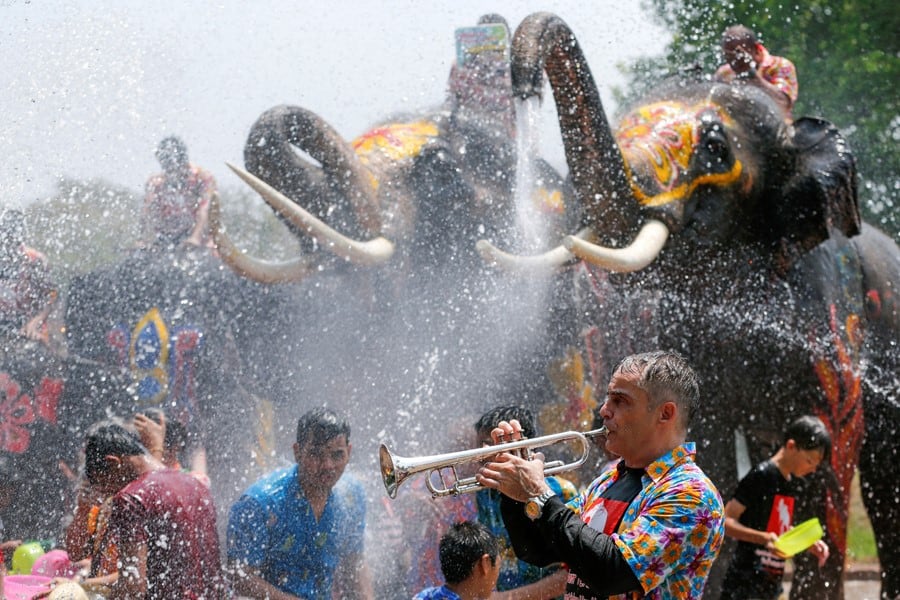
中国の旧正月とベトナムの旧正月
中国の旧正月とベトナムの旧正月は、テト グエン ダンまたはテトとも呼ばれ、どちらもそれぞれの文化で祝われる重要な伝統的な祝日です。この 2 つはいくつかの類似点を共有していますが、次のような大きな違いもあります。
- 文化的起源:
- 中国の旧正月: 中国の旧正月は旧暦に基づいており、世界中の華人コミュニティで祝われます。中国の最も重要な伝統的なお祭りです。
- ベトナムの新年 (テト): テトも旧暦に基づいていますが、ベトナム文化に特有のものです。それはベトナムで最も重要で広く祝われる祭りです。
- 名前と日付:
- 旧正月:中国語では「春節」と呼ばれ、通常は太陰暦に応じて21月20日からXNUMX月XNUMX日の間にあたります。
- ベトナムの旧正月 (テト): テト グエン ダンはベトナム語での正式名称で、通常は旧正月とほぼ同じ時期に行われます。
- 黄道帯の動物:
- 中国の旧正月: 中国の黄道帯の各年は、12 年周期で特定の動物の星座に関連付けられています。これらの動物は、ネズミ、ウシ、トラ、ウサギ、ドラゴン、ヘビ、ウマ、ヤギ、サル、オンドリ、イヌ、ブタです。
- ベトナムの正月(テト):テトでも中国の十二支の動物が使用されますが、発音と象徴には若干の違いがあります。
- 風習や伝統:
- 中国の旧正月: 伝統には、獅子と龍の舞、赤い装飾、花火、赤い封筒 (ホンバオ) の贈呈、家族の再会などが含まれます。毎年、特定の習慣や儀式が関連付けられています。
- ベトナムの新年 (テト): テトの習慣には、家の掃除や飾り付け、先祖への食べ物のお供え、寺院や仏塔の訪問、赤い封筒 (li xi) に幸運のお金を入れること、特別なテト料理を楽しむことが含まれます。
- フード:
- 中国の旧正月: 中国の伝統的な旧正月の食べ物には、餃子、魚、春巻き、もち餅 (ニアンガオ) などがあります。
- ベトナムの新年 (テト): テト料理には、バイン チュン (四角いもち餅)、バイン テット (円筒形のもち餅)、野菜の漬物、さまざまな肉料理が含まれることがよくあります。
- 期間:
- 中国の旧正月: お祝いは通常 15 日間続き、7 日目 (連理) が最高潮となり、元宵節で終わります。
- ベトナムの新年 (テト): テトのお祝いは通常約 1 週間続きますが、最初の 3 日間が最も重要です。
- 文化的意義:
- 中国の旧正月: 春の始まりを示し、家族が集まり、先祖を敬う時期です。
- ベトナムの新年 (テト): テトは、春の到来、再生、家族とコミュニティの重要性を象徴しています。
中国の旧正月とベトナムの旧正月には違いがありますが、どちらの祭りも家族、伝統、新たな始まりのお祝いという共通のテーマを共有しています。特定の習慣や伝統は異なる場合がありますが、喜びと刷新の精神が両方の祝日の中心となっています。
クイズで新年を祝いましょう
新年のトリビアは、家族の絆を深めるために常に人気です。ここから無料で入手してください👇
主要なポイント(要点)
旧正月、春節、太陽の正月など、新年は家族や友人との絆を深めるのに最適な時期です。伝統や儀式は一旦置いておき、たとえ今は大切な人から遠く離れていても、インタラクティブなゲームやクイズなど、楽しく健康的なアクティビティで新年を迎える方法はたくさんあります。
意図に基づいて、適切なメッセージを適切なユーザーに適切なタイミングで あはスライド すぐに無料でダウンロード 旧正月トリビアクイズ 最高の新年のアイスブレイクとゲームのために。
よくある質問
旧正月を祝う国はどこですか?
旧正月の国には、中国、ベトナム、台湾、香港、マカオ、シンガポール、マレーシア、韓国、インドネシア、タイ、カンボジア、ミャンマー、フィリピン、日本、モンゴルが含まれます。
日本人は旧正月を祝いますか?
日本では、旧正月(中国語で「正月」とも呼ばれます)は、中国系やベトナム系コミュニティが多い国ほど、主要な祝日として広く祝われていません。一部の日系中国系コミュニティでは、伝統的な慣習や集まりをもって旧正月を祝うこともありますが、日本では正式な祝日ではなく、他の旧正月を祝っている国と比べると、祝賀行事も比較的限定的です。
